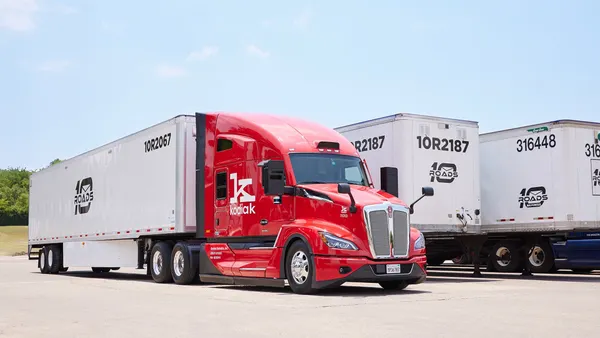Dive Brief:
- Ground delivery costs are expected to remain elevated in what is shaping up to be a record year for shipping rates, according to the TD Cowen/AFS Freight Index.
- Per-package ground delivery rates were 31.2% above the index's January 2018 baseline in Q3 2025, surpassing previous projections and up from 20.8% in Q3 2024. Costs are forecasted to climb further in Q4, driven by peak season surcharges and dimensional rounding changes.
- Despite the year-over-year jump, ground rates dipped from Q2 to Q3 in part due to residential shipments making up a smaller share of deliveries compared to previous quarters. Residential deliveries feature additional surcharges that drive up the index's cost per package compared to business-to-business shipments.
Ground shipping rates slated to jump in peak season
Dive Insight:
TD Cowen and AFS Logistics project that 2025 will set a record for highest average rate per package as carrier pricing tweaks, additional fees and waning discount activity keep the index elevated. Fuel surcharge increases from FedEx and UPS have been a particular pain point for shippers in recent quarters.
"The on-highway diesel fuel price rose 1.3% YOY, while the carrier Ground fuel surcharge rates increased 26.1% YOY, perpetuating cumulative effects of prior fuel surcharge adjustments," per the index.
Shippers are proactively finding ways to limit the effects of carrier pricing adjustments, said Mingshu Bates, chief analytics officer and president of parcel at AFS, in an interview. Many are shifting volume to slower, less expensive services and exploring alternative delivery options.
Additionally, Bates said several AFS Logistics clients are working with their packaging providers to shrink their box sizes, blunting the impact of FedEx and UPS' moves to round up any fraction of an inch when calculating dimensions.
"I think the shippers are getting savvier," Bates said.
Meanwhile, the cost per package for express parcel shipments increased more than TD Cowen and AFS Logistics expected in Q3. The index attributed the year-over-year jump from 0.7% to 4% in part to fuel surcharge pressures, an increase in average billed weight and shippers using more premium services.















